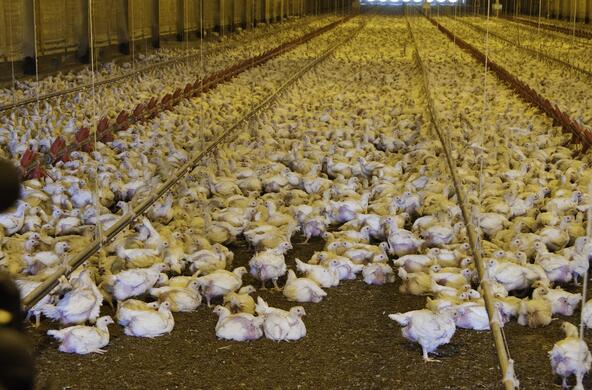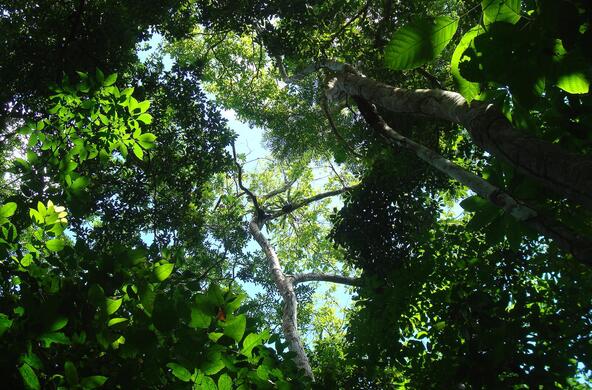How is the fish on your dinner plate tied to agricultural fertilizer? Let’s use the ecosystem approach to think about the big picture. On land, nitrogen-rich fertilizer is applied to crops to stimulate production. A percentage of this nitrogen makes its way into coastal oceans via a network of streams and rivers. When fish feed in coastal waters, they accumulate nitrogen as biomass. In our quest for protein, humans move fish from the ocean to the table.
While nitrogen is essential to plant and animal life, in excess it acts as a pollutant that degrades the quality of coastal oceans. A recent Nature Geoscience study, coauthored by Cary Institute biogeochemist Dr. Nina Caraco, has revealed that fisheries play an important role in removing terrestrially-generated nitrogen from coastal oceans.
Accounting for this withdrawal is crucial; terrestrial-derived nitrogen can stimulate coastal phytoplankton growth, leading to eutrophication. Eutrophic waters are characterized by a suite of ecological ills—from reduced dissolved oxygen and biodiversity loss to shifts in species composition. Around the world, nitrogen-driven eutrophication is both widespread and on the rise.
With colleague Dr. Roxane Maranger, a University of Montreal scientist and past Cary Institute post-doctoral researcher, Caraco performed an analysis of coastal nitrogen inputs (fertilizer) and removal (fish harvest) from 1960 to 2002. While things like sewage contribute to terrestrial nitrogen pollution, fertilizer runoff is the best documented and most significant source.
The prognosis is not good. Caraco comments, “During the period assessed, both fish removal and nitrogen inputs increased, but the increase in nitrogen has been much faster. While fisheries remove some terrestrial-generated nitrogen from coastal oceans, nitrogen pollution is outpacing fish removal limits.” Fish harvests, which are bound by biology, can’t compete with human- generated fertilizer production.
In the 1960s, nitrogen removal in fish harvest was equivalent to sixty percent of the nitrogen fertilizer delivered to coastal ecosystems throughout the world. In only four decades, this figure has dropped to twenty percent. Fish harvest is unable to keep pace with escalating nitrogen runoff. This is especially troubling given our growing global dependence on fertilizer.
A continued decline in the proportion of nitrogen withdrawn by fishery harvest will contribute to an increase in the balance of nitrogen in coastal waters. From a historical perspective, this is bad news. Throughout the world, coastal ecosystems are becoming richer in nitrogen, resulting in increased phytoplankton blooms, anoxic bottom waters, and coastal dead zones.
Sustainably managing coastal ecosystems depends on understanding human impacts to the nitrogen cycle. As such, Caraco and Maranger recommend that commercial fisheries be included in assessments of the global nitrogen budget. In some areas, declining fish harvest may be one of the strongest drivers of coastal eutrophication.
While nitrogen is essential to plant and animal life, in excess it acts as a pollutant that degrades the quality of coastal oceans. A recent Nature Geoscience study, coauthored by Cary Institute biogeochemist Dr. Nina Caraco, has revealed that fisheries play an important role in removing terrestrially-generated nitrogen from coastal oceans.
Accounting for this withdrawal is crucial; terrestrial-derived nitrogen can stimulate coastal phytoplankton growth, leading to eutrophication. Eutrophic waters are characterized by a suite of ecological ills—from reduced dissolved oxygen and biodiversity loss to shifts in species composition. Around the world, nitrogen-driven eutrophication is both widespread and on the rise.
With colleague Dr. Roxane Maranger, a University of Montreal scientist and past Cary Institute post-doctoral researcher, Caraco performed an analysis of coastal nitrogen inputs (fertilizer) and removal (fish harvest) from 1960 to 2002. While things like sewage contribute to terrestrial nitrogen pollution, fertilizer runoff is the best documented and most significant source.
The prognosis is not good. Caraco comments, “During the period assessed, both fish removal and nitrogen inputs increased, but the increase in nitrogen has been much faster. While fisheries remove some terrestrial-generated nitrogen from coastal oceans, nitrogen pollution is outpacing fish removal limits.” Fish harvests, which are bound by biology, can’t compete with human- generated fertilizer production.
In the 1960s, nitrogen removal in fish harvest was equivalent to sixty percent of the nitrogen fertilizer delivered to coastal ecosystems throughout the world. In only four decades, this figure has dropped to twenty percent. Fish harvest is unable to keep pace with escalating nitrogen runoff. This is especially troubling given our growing global dependence on fertilizer.
A continued decline in the proportion of nitrogen withdrawn by fishery harvest will contribute to an increase in the balance of nitrogen in coastal waters. From a historical perspective, this is bad news. Throughout the world, coastal ecosystems are becoming richer in nitrogen, resulting in increased phytoplankton blooms, anoxic bottom waters, and coastal dead zones.
Sustainably managing coastal ecosystems depends on understanding human impacts to the nitrogen cycle. As such, Caraco and Maranger recommend that commercial fisheries be included in assessments of the global nitrogen budget. In some areas, declining fish harvest may be one of the strongest drivers of coastal eutrophication.





